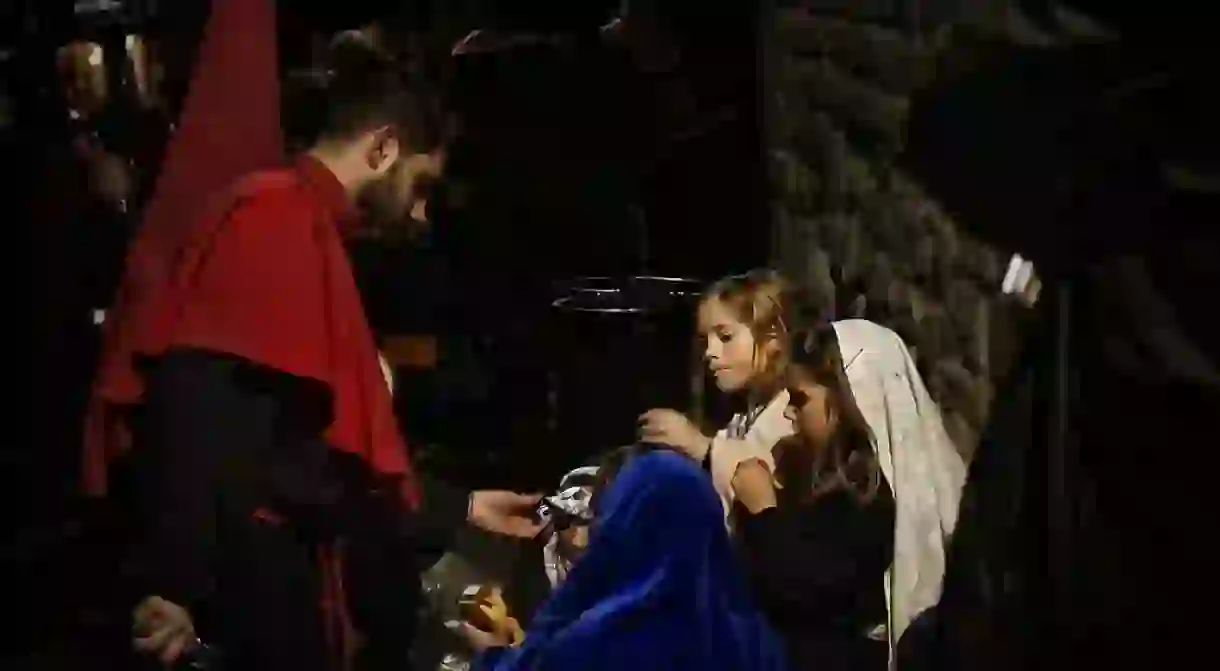What to Do During Easter in Barcelona

Given its important Catholic tradition, it’s no surprise that Easter is a big deal here in the Spanish city of Barcelona. During the run up to Easter – known as Semana Santa, or “Holy Week” – there are numerous processions, masses and feasts to look out for when visiting the Catalan capital.
The Semana Santa
As everywhere, the dates of Easter are variable from year to year, but there is a specific schedule which remains the same regardless. The start of the Easter celebrations begins on Palm Sunday, the Sunday before Easter Sunday, which is known here in Spain as Domingo de Ramos, or Diumenge de Rams in Catalan. On this date Catholics celebrate Jesus’ arrival to Jerusalem, where his followers lay down palm leaves in front of him as he rode into the city.

Today, processions are organized at churches across the city of Barcelona and children can be seen waving modern day palms – some made of authentic palm, others paper or even olive wood. Many families keep the palms for the rest of the year, burning them on Ash Wednesday to mark the beginning of Lent. One of the best places to observe this celebration today is of course outside the Cathedral of Barcelona which sees the largest parades of its kind in the city.
The Processions of the Brotherhoods
The next important date of the Semana Santa is of course, Good Friday or Viernes Santa, which is an important religious celebration during which many processions and masses take place across the city. One of the most remarkable aspects of the festivities are the processions of what are known in Spanish as “hemandades,” or “brotherhoods.”
These are religious associations of a penitential nature, many of them observing long periods of fast, and dedicated to various aspects of the Easter celebrations. Many of the hermandades are centuries old and can trace their origins back to the Middle Ages, when they played an important spiritual and peacekeeping role. In some case the hermandades can be made up entirely of reformed alcoholics, criminals and other former sinners.

Perhaps the most surprising aspect of the processions of the hermandades are their robes, masks and more particularly the conical hats known as capirotes – which together resemble the outfits worn by members of the KKK. In fact, the history of these outfits can be traced back to the Middle Ages when remorseful sinners would mask their faces to retain anonymity in the local community when taking part in the processions.
The Easter Weekend
Good Friday is the next important celebration in the Easter calendar, and once again visitors to Barcelona can expect to see spectacular processions taking place outside the Cathedral of Barcelona. There are also masses organized, and in many cases this is a solemn day of religious observance as well as a bank holiday – so expect to see many shops and restaurants closed.

Easter Sunday is similarly an important religious celebration during which worshipers will attend masses and in many cases gather with their families. Unlike on Good Friday, many restaurants will open despite the bank holiday to welcome those having celebratory family meals, as is customary on that day. This is a good chance to visit on the city’s more traditional restaurants and enjoy an authentic Catalan feast – try Botafumeiro in Gràcia or Can Cañete in el Raval.
Easter Monday and the Mona de Pascua
If you’re a child in Barcelona, or simply have a sweet tooth, then your favorite moment of the Easter celebrations is probably Easter Monday. During the Easter Sunday celebrations with the family, godparents give their godchildren a special type of cake known as the Mona de Pascua – but the sweet treat is not eaten until the following day, Easter Monday. This cake was traditionally made using leftover boiled eggs from Lent, up to one for each year of the child’s life.

Today, however, the Mona de Pascua has evolved and there are many different varieties of cake available, decorated with everything from popular children’s icons to more traditional Easter eggs and spring themes. Many of the city’s most famous bakeries – such as the Pasteleria Escribà – will have beautiful displays featuring ornate cakes and chocolates.
The Easter weekend is a popular time to visit the city of Barcelona, with many travelers from across Europe making the most of the long weekend to treat themselves to a short city break and some early sun. On the other hand, many locals also take advantage of the time off to escape the busy city center and head to the countryside for a relaxing weekend with family.













